- Provider Resource
- Home
- Browse Provider Resource
- Refer a patient
COVID-19 update: During this unprecedented global crisis, we’ve been working nonstop to develop protocols, policies and recommendations for the care of known or suspected COVID-19 patients, the safety of healthcare workers and health of our communities. We hope that by sharing our work, we can collaborate and inform your teams to be able to spend more time responding to and caring for your patients.
See UW Medicine’s screening and testing algorithms, policy statements and protocols.
UW Medicine Trauma & Emergency Services provides emergency medical services 24 hours per day, seven days per week, and is staffed and equipped to care for all emergent medical conditions, illnesses and injuries. Our research scientists advance the standards of trauma and emergency care by exploring new therapeutic strategies to enhance the care of these complex patients.
Videos
 Video
Video
Increase of Influenza B Seen with This Year's Outbreak
Every flu season is unique. The 2019-2020 outbreak features more cases of influenza B, the viral strain that usually emerges later in the season.
 Video
Video
How to Support Sexual Assault Survivors
Emily Dworkin, senior fellow at the UW School of Medicine, discusses how to best support a survivor as they work through their PTSD.
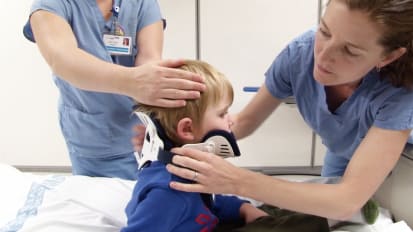 Video
Video
This video provides an overview of how to fit a Cervical Collar for pediatric patients.
 Video
Video
This video provides an overview of important things to consider when dealing Pediatric Head Anatomy in a trauma situation.
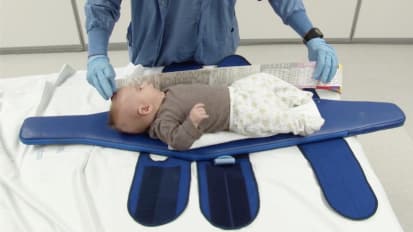 Video
Video
This video provides an overview of how to use the Broselow Tape. The Broselow tape is a standardized, color coded, pediatric emergency measuring tape. This tape provides you with a rapid estimate of a child’s weight based on their recumbent length.
 Video
Video
This video provides a step-by-step demonstration of how to best use a spine board when treating and immobilizing children and infants.
 Video
Video
Geriatric Traumatic Brain Injury
Hilaire Thompson, PhD discusses prevention and treatment of geriatric traumatic brain injury.
 Video
Video
ECMO Used for Life Saving Treatment at Harborview Medical Center
Eileen Bulger, MD, Chief of Trauma at Harborview Medical Center, discusses how the ECMO provides life saving treatment.
 Video
Video
Pre-hospital Management with Dr. Saman Arbabi
Saman Arbabi, MD, discusses the importance of prehospital care and how it affects outcomes of patients with Traumatic Brain Injuries.
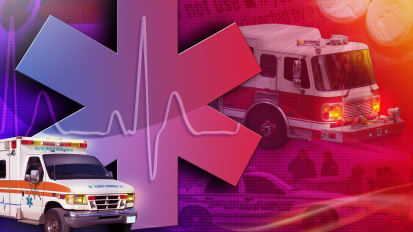 Video
Video
Development of a Comprehensive Emergency Medical Service: The Seattle Story
Hugh M. Foy, MD provides an understanding of the coincident factors that led to our EMS system.
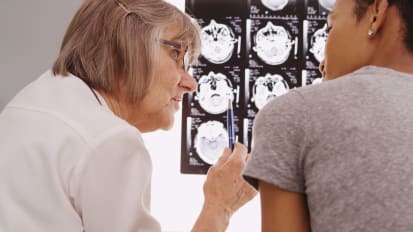 Video
Video
Geriatric Traumatic Brain Injury
Hilaire Thompson, PhD, discusses the epidemiology of geriatric TBI in the US and implications for injury prevention and management.
 Video
Video
Prehospital Management of Patients with Traumatic Brain Injury
Saman Arbabi, MD, presents Prehospital Management of Patients with Traumatic Brain Injury at the "Hot Topics & Best Practice in Adult TBI" webinar.
 Video
Video
What Everyone Should Know About Child Trauma
Georganna Sedlar, PhD, discusses the effects of trauma on youth, the role of avoidance, and how trauma treatment works.
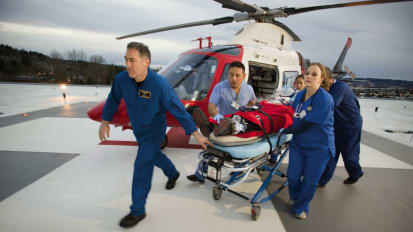 Video
Video
Firearm Violence and Injury Prevention
Frederick Rivara, MD, MPH, discusses the magnitude of the problem of gun violence in the US and aims to educate providers about what they can do to reduce the risk of gun violence in their patients.
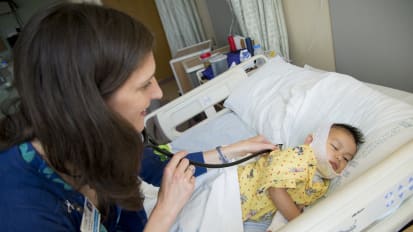 Video
Video
Color Coding for Pediatric Trauma Care, Resuscitation and Disaster Preparedness
Mary King, MD, discusses the importance of color coding for pediatric trauma care, resuscitation and disaster preparedness.
 Video
Video
Thromboelastography & Coagulation Management in Trauma
John R. Hess, MD, discusses how the coagulation system works and why it fails in trauma.
 Video
Video
Pelvic Sheeting for Immobilization
This video from Harborview Medical Center in Seattle, WA demonstrates proper technique for traumatic pelvic fracture immobilization using a bedsheet.

This curriculum is designed primarily for inpatient providers (physicians and nurses) of early care to injured children. It has been specifically designed as a resource to allow providers in adult-designated trauma centers and pediatric-designated trauma centers in Washington state to meet the "Pediatric Education Requirement" (PER) developed by the Washington State Emergency Medical Services and Trauma System, and defined in Washington Administrative Code (WAC 246-976-700). However, the curriculum is also of potential value to all pediatric trauma care providers, both in the inpatient and prehospital settings.
Protocols
 Document
Document
Screening, Brief Intervention, and Referral for Treatment (SBIRT)
Screening, brief intervention, and referral (SBIRT) can be used for both alcohol and drug issues.
 Document
Document
Initial Management of Traumatic Brain Injury
Algorithm for the initial management of traumatic brain injury.
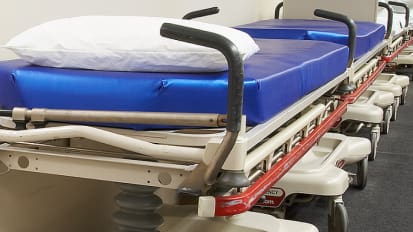 Document
Document
Pediatric Consultation and Transfer Guidelines
This document contains guidelines of when to transfer the critically injured and/or ill pediatric patient.
 Document
Document
Initial Management of Major Pelvic Fractures
To ensure life threatening injuries are identified appropriately, a systematic approach should be taken when assessing patients with pelvic fractures.
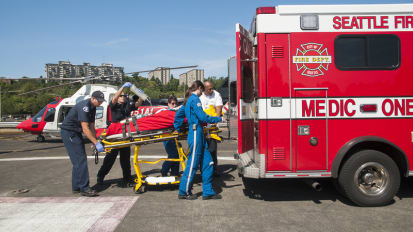 Document
Document
The decision to transfer to the next higher level of care must be made rapidly based on the physician's assessment and clinical expertise.
 Document
Document
Geriatric Trauma Management Guidelines
This document serves to consolidate recommendations from existing guidelines to provide concise, evidence-based, expert panel rated lists of protocols and practices to improve trauma care among elderly patients.
 Document
Document
Head Injury in Anticoagulated Patients
To rapidly identify intracranial hemorrhage in anticoagulated patients and reduce the time from presentation to reversal of anticoagulation.
 Document
Document
Geriatric Trauma Care Guideline
Early aggressive trauma care has been shown to improve outcome for geriatric patients with survivable injuries.
 Document
Document
Trauma Team Activation Criteria
This Trauma Team Activation Criteria Guideline defines the minimum patient criteria for full or modified trauma team activation.
 Document
Document
Initial Evaluation & Management of Blunt Thoracic Aortic Injury
A trauma evaluation and management guideline for initial evaluation and management of blunt thoracic aortic injury (TAI).
 Document
Document
Evaluation and Management of Blunt Abdominal Trauma
Abdominal trauma remains a leading cause of mortality in all age groups. A systematic approach should be taken when assessing the trauma patient.
 Document
Document
Cervical Spine Injury Evaluation
To provide guidance for determining if a trauma patient has a cervical injury; adult and pediatric algorithms.
 Document
Document
Empiric Antimicrobial Therapy in Sepsis Based on Suspected Primary Source
Recommendations based on local microbiology and antimicrobial resistance patterns
 Document
Document
Sepsis Transfer Center Stabilization Protocol
Clinical recommendations developed to aid in the early identification and management of suspected infection
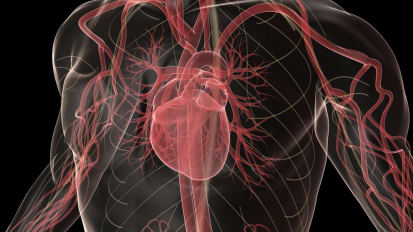 Document
Document
This protocol is in the interest of facilitating rapid, safe and expeditious transfer while maximizing the chances for survival
Information & Resources
 News
News
Wound Healing in Mucous Tissues Could Ward off AIDS
Wound-repair capabilities preserve tissue integrity during early infection and might prevent inflammation that underlies immune exhaustion.
 News
News
Injury & Prevention Center Now a CDC-Funded Injury Control Research Center
UW Medicine’s Harborview Injury Prevention & Research Center has been awarded a $4.2 million grant to promote injury prevention and control by the Centers for Disease Control and Prevention.
 Document
Document
UW Medicine is a world-class academic health system. We accomplish our mission—improving the health of the public—by providing patient care, educating tomorrow’s health professionals and conducting leading-edge medical discovery.
 Document
Document
Across Washington, Alaska, Montana and Idaho, Harborview Medical Center is the only facility providing Level I trauma services – the most advanced care, available 24/7 – to adult and pediatric patients.
 Document
Document
Airlift Northwest is the pre-eminent provider of air medical transport services in the Pacific Northwest, dedicated to providing safe, efficient air medical care to critically ill and injured infants, children and adults.
Research & Publications